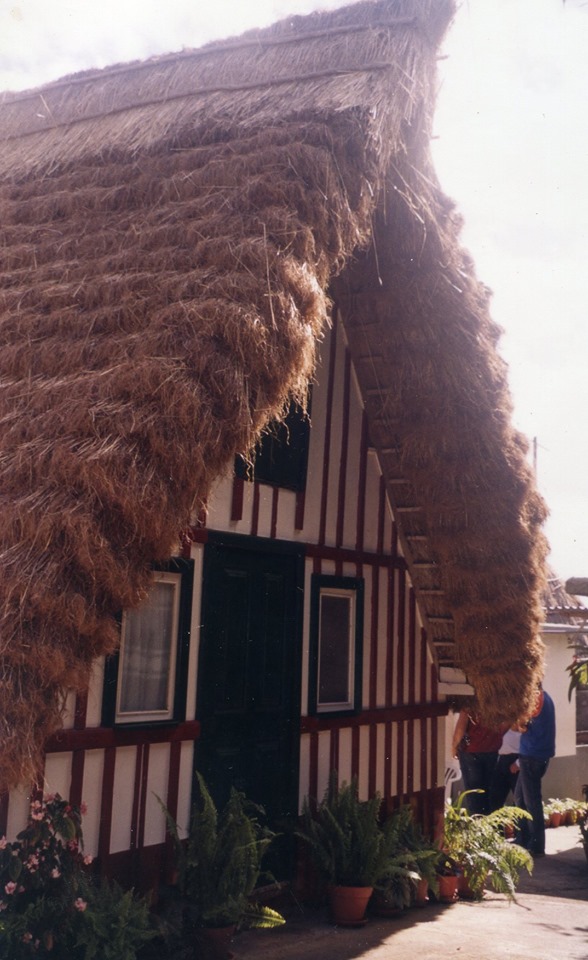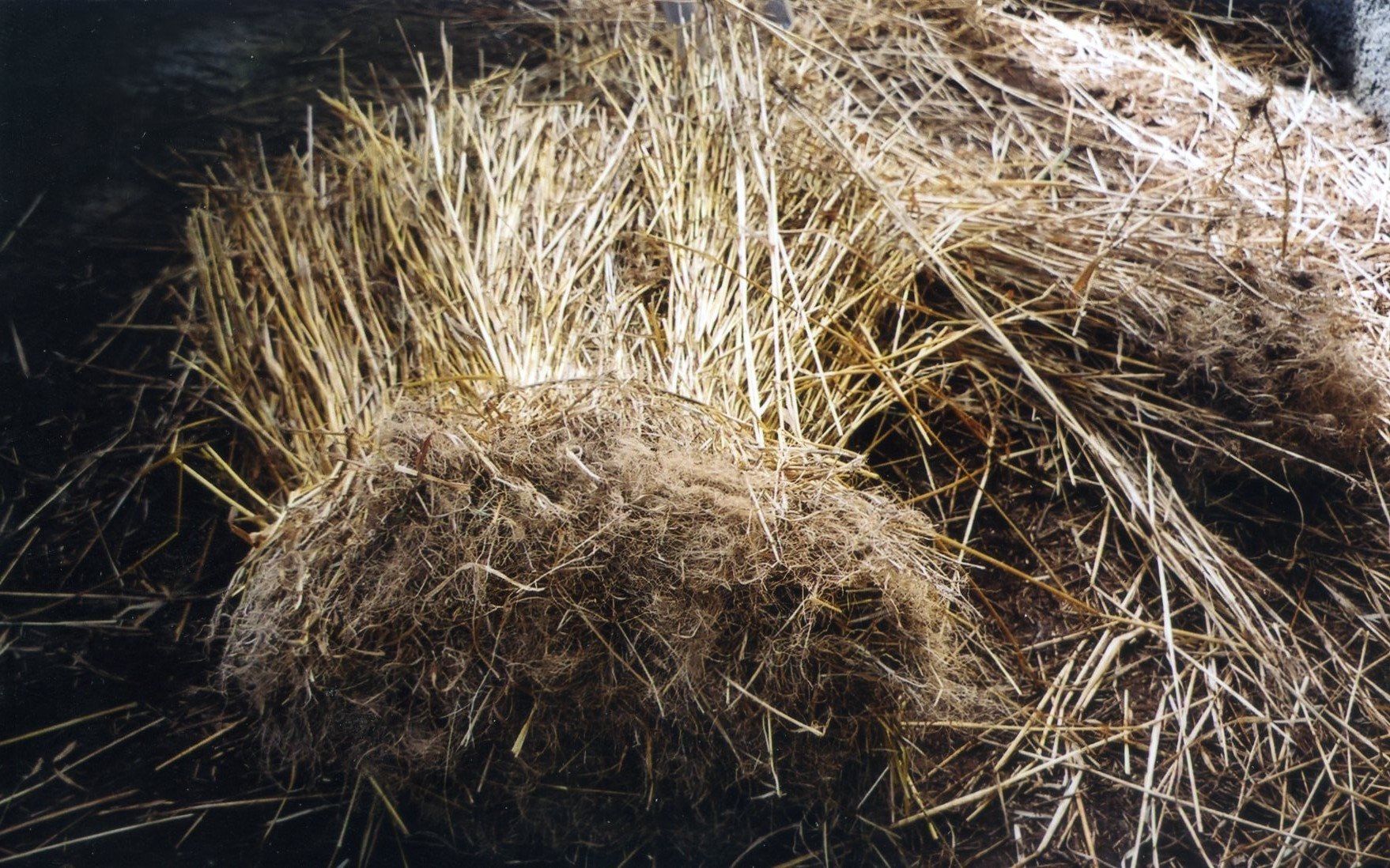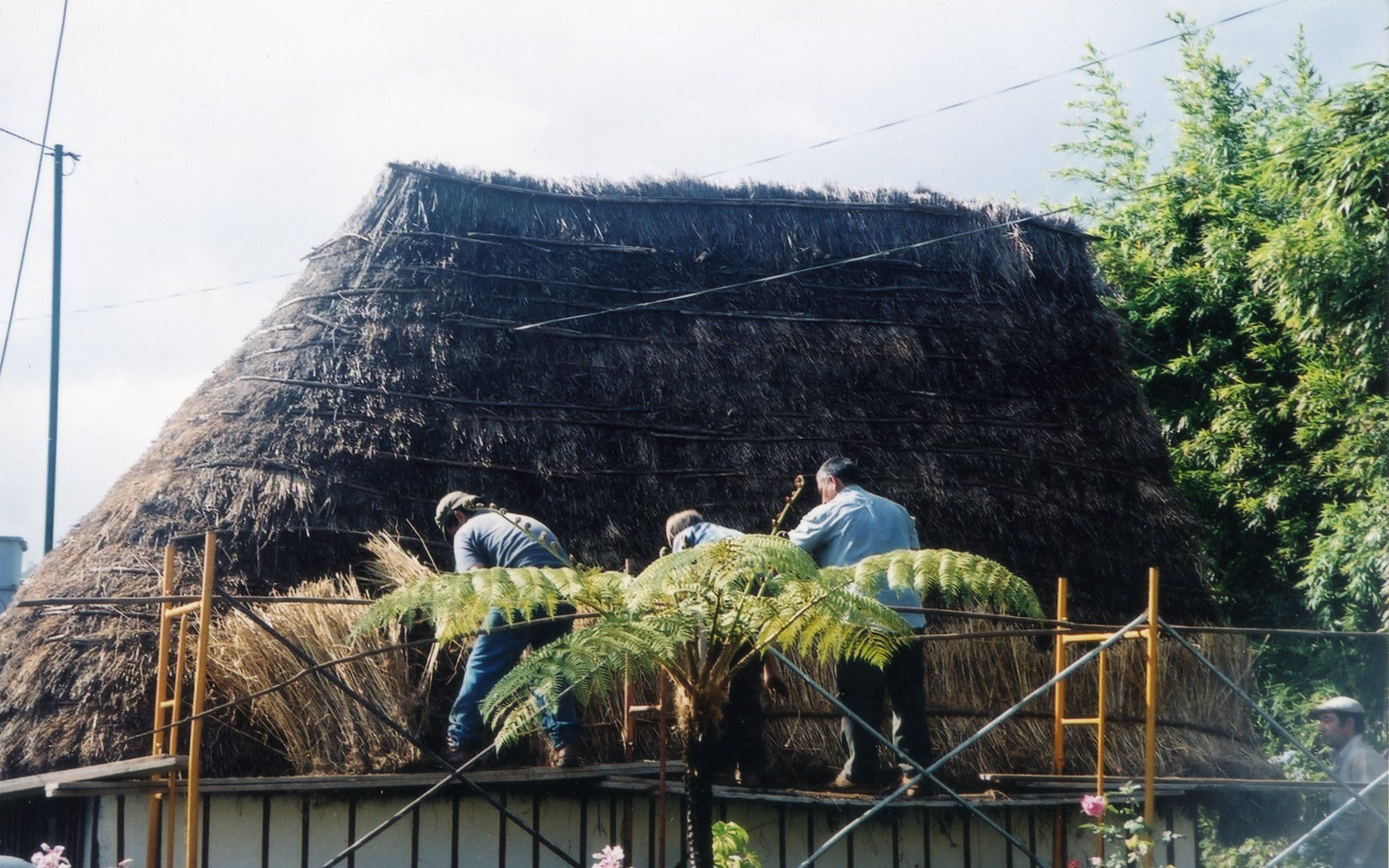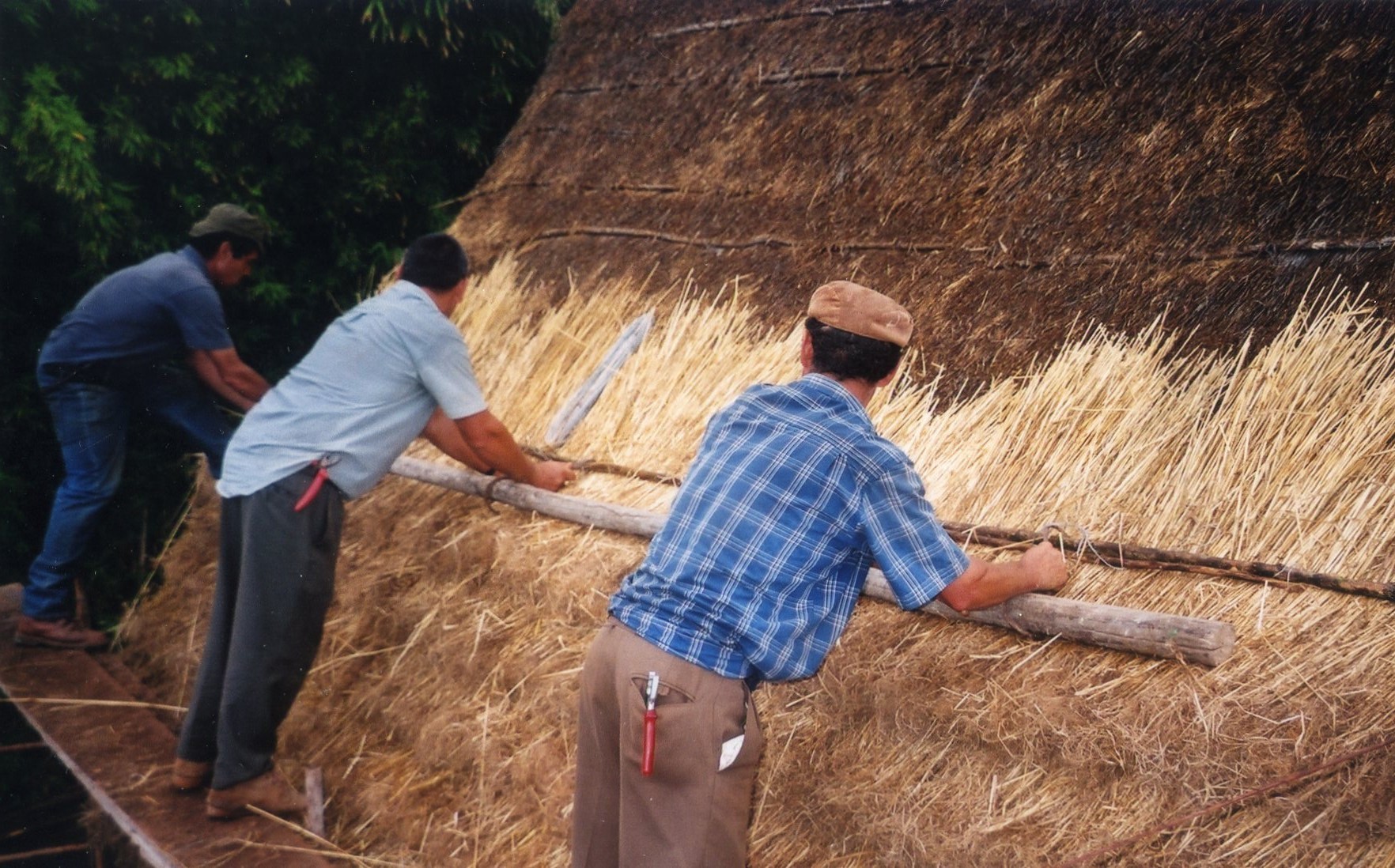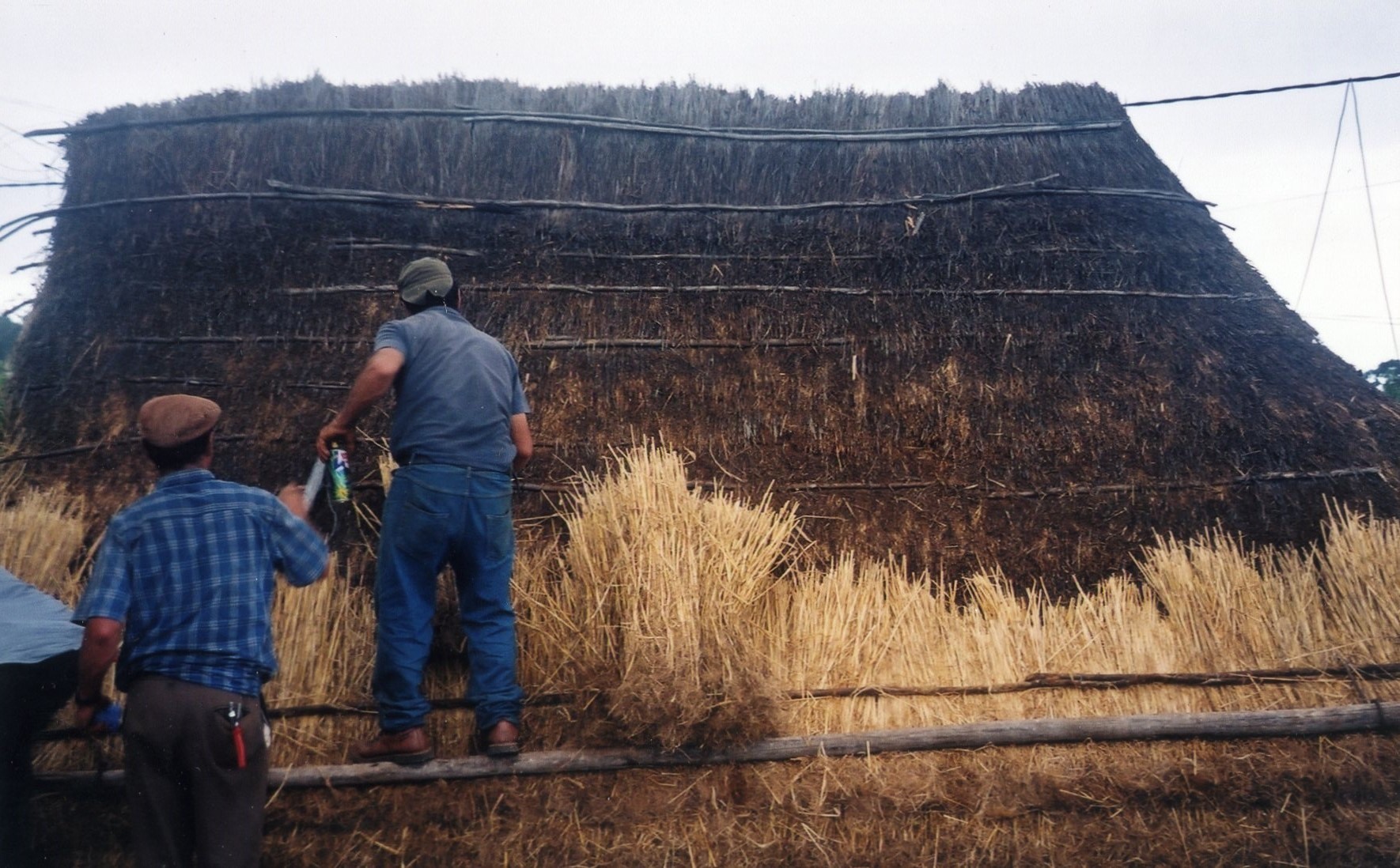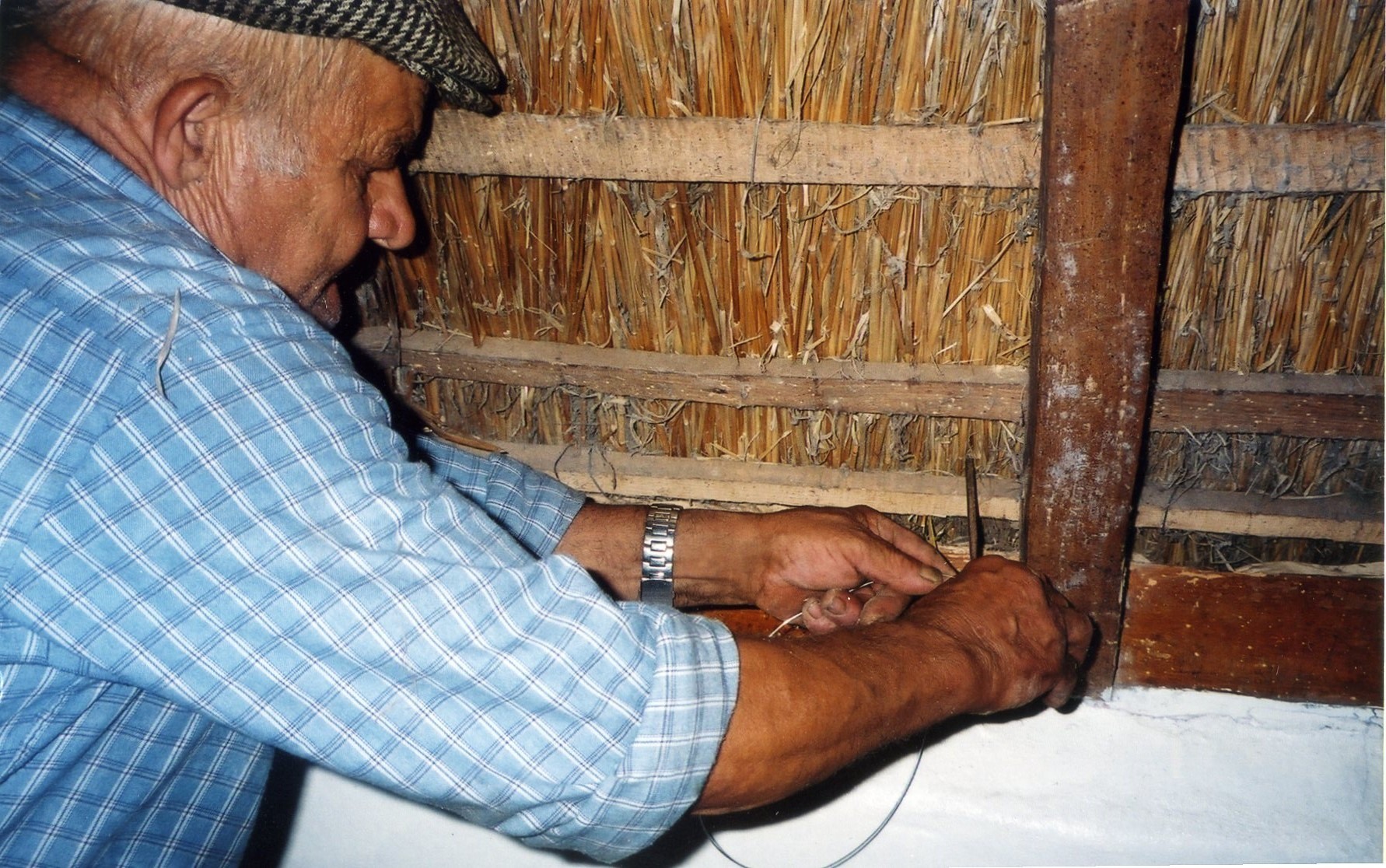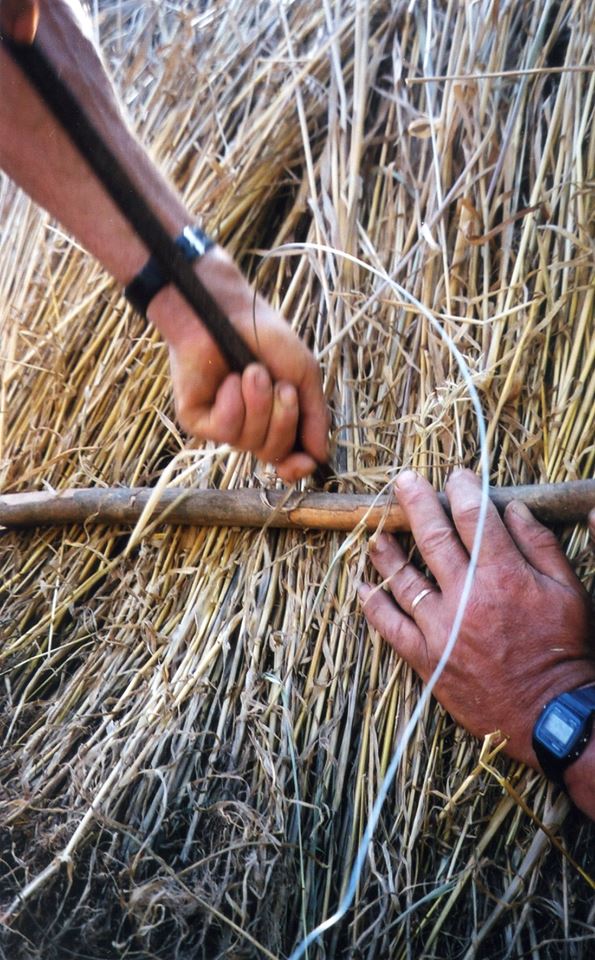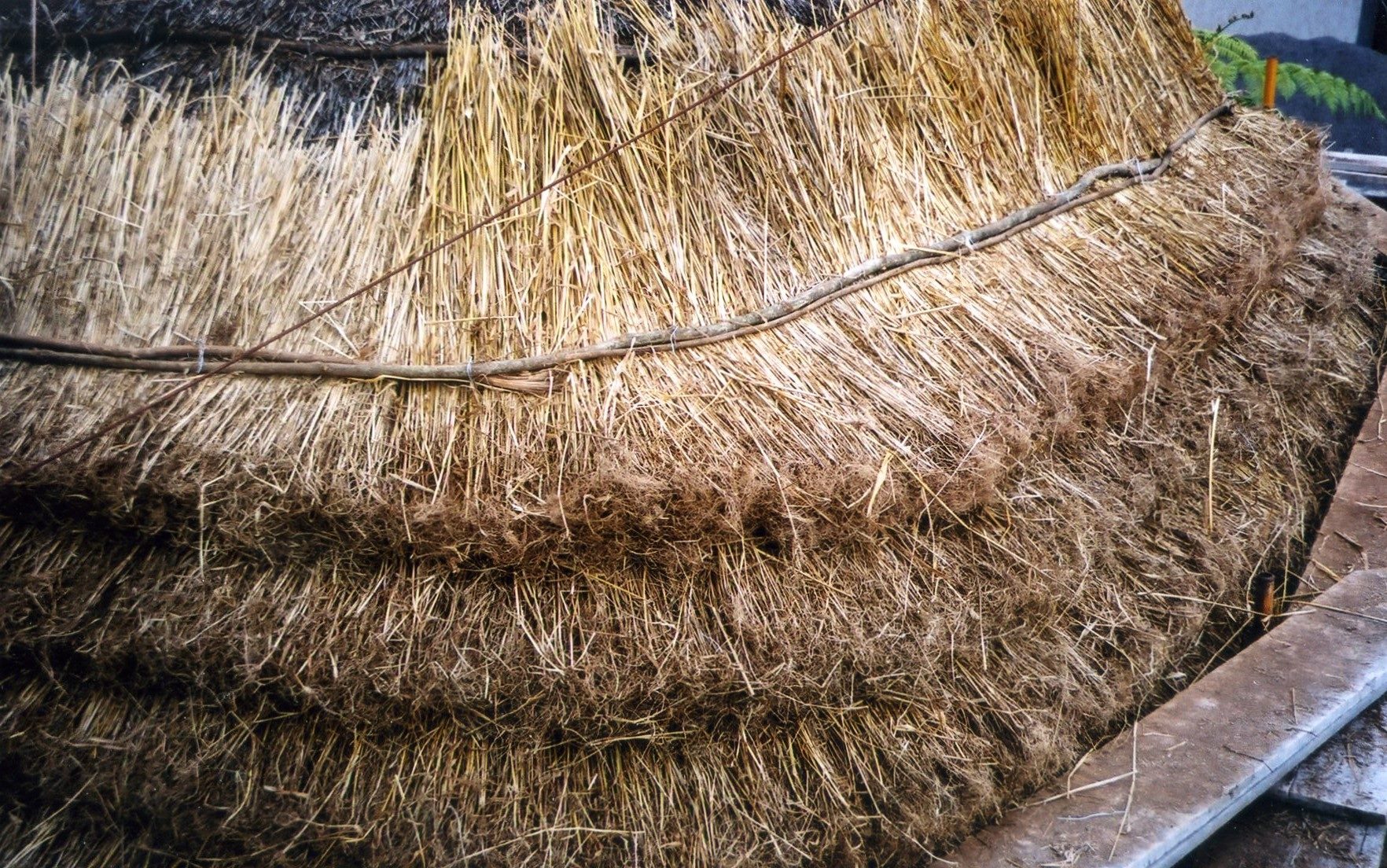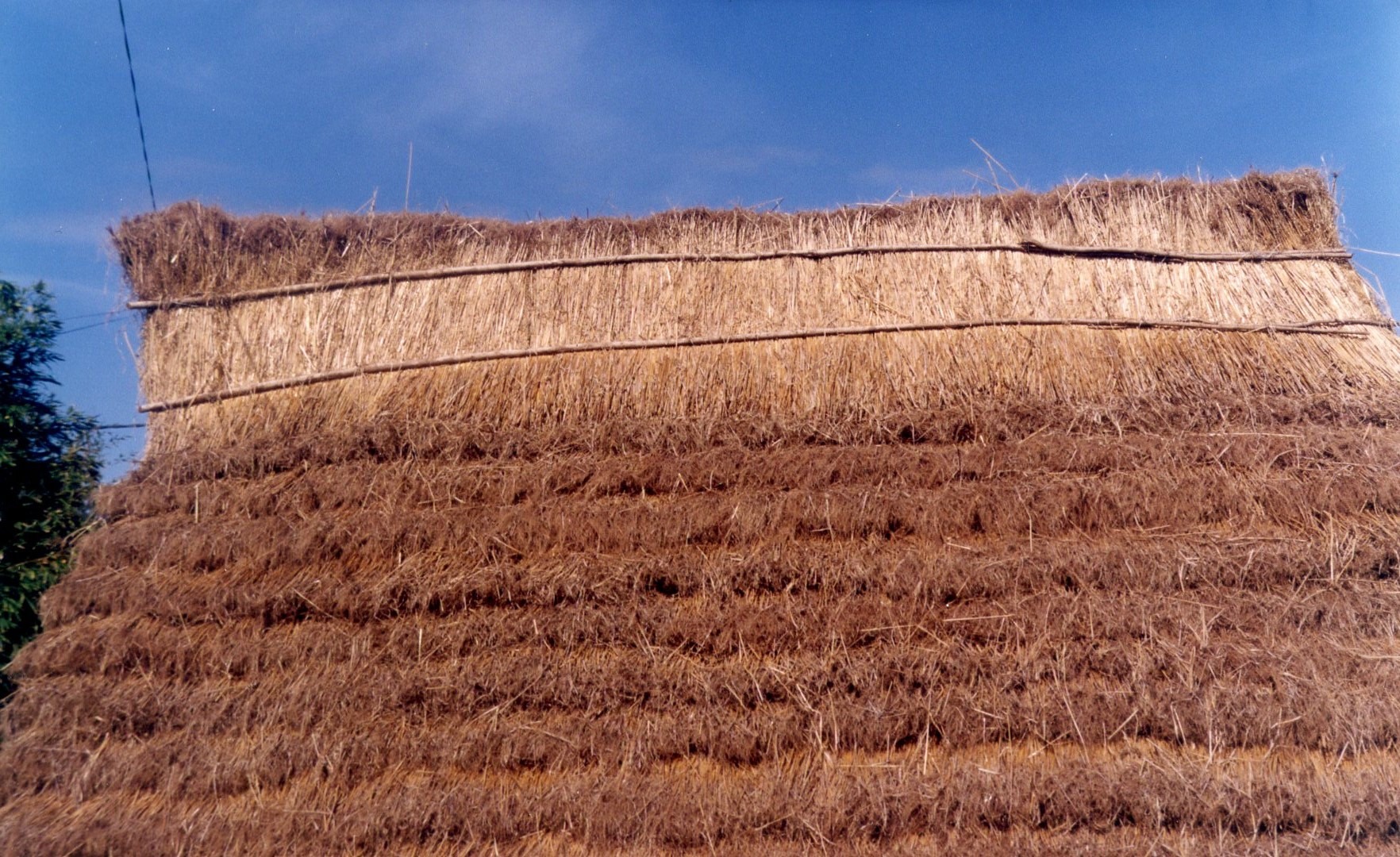Did you know that? In the past, it was necessary to "muffle the houses"?
Built in wood, triangular in shape and covered with “thatched” (“colmo”) roof, these traditional houses maintain their original architectural features, with a ground floor that used to house animals during the night, and an upper floor, which served as the family's home. Every four years or so, these houses, covered with wheat straw ("colmo"), need a cyclical renovation of the straw, an operation popularly called "muffling the house".
It is necessary to select the rooted wheat straw “stubble” (“restolho”), according to the size, volume and root, which is tied in bundles (“maranhos”).
The old “colmo” is removed, leaving the inner straw layer. On top of this the “stubble” is placed in “rows” (layers), in an upward direction, with the root down, a task performed by three men, on top of a scaffold.
On top of the “stubble”, sticks of puff or eucalyptus are placed horizontally, and with a kind of needle - “the smother” (“a abafadura”) – which the wire is inserted the tip, the “stubble” bundles are attached, between these poles and the slats, inside the house. In the past they used dry wicker, which was placed in the smokehouse.
Another layer is superimposed on this layer, hiding the poles, and so on, until the new layers reach the “cumieira” (end of the roof). These tasks are performed by one man inside the house and three outside.
After placing each “row” (layer), the straw is tied on the side areas, next to the door of the house. When the “stubble” layers reach a certain height, the scaffolding is no longer useful. It is tied, a thick stick, to the frame poles, on each side of the house, attached with hooks, the men work on top of it.
As the upper “rows” are placed, this rod is successively moved upwards so that men can climb.
After the last “row”, the placement of the “stubble” begins, which will form the “cumieira”, leaving the straw with the “section” facing upwards (unlike the other rows), also attached by sticks, which remain in sight. The “cumieira” straw is trimmed at the bottom and beat with a stick, in order to level it. This hard work takes an average of two days.
Credits: Museu Etnográfico da Madeira.
